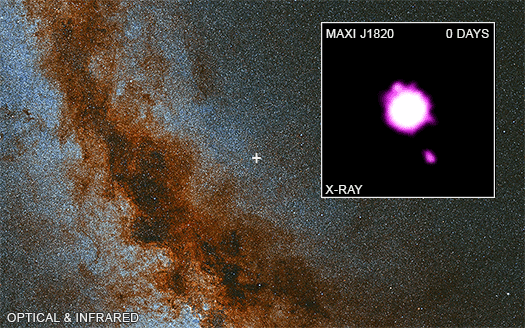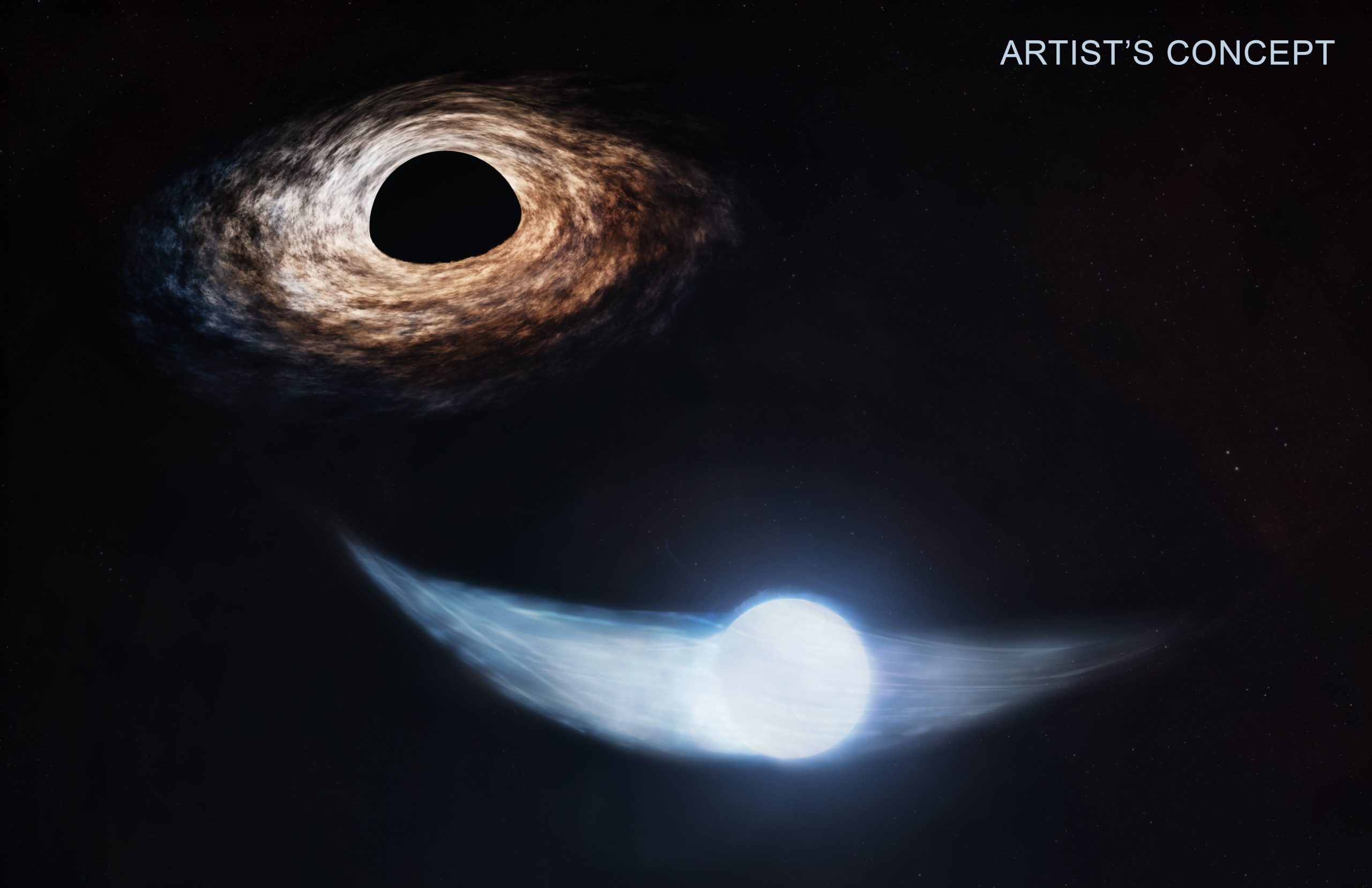Key Takeaways:
- NASA’s Chandra X-ray Observatory recorded a black hole ejecting material at almost light speed.
- The black hole, part of the MAXI J1820+070 system, is located 10,000 light-years from Earth.
- Jets expelled by the black hole were among the fastest observed, moving over 80% of light speed.
- An optical illusion known as superluminal motion made one jet appear faster than light itself.
- Findings reveal significant insights into jet formation and interactions with interstellar space.
___________
A black hole in the MAXI J1820+070 system ejected about 400 million billion pounds of gas in twin jets—equivalent to 500 million times the mass of the Empire State Building.
In a significant astronomical discovery, NASA’s Chandra X-ray Observatory captured a rare phenomenon: a black hole ejecting massive jets of material at nearly the speed of light. This black hole is part of the binary system MAXI J1820+070, positioned approximately 10,000 light-years away, which is relatively close in cosmic terms. This proximity allowed detailed observations that contribute to our understanding of how black holes interact with companion stars.
The MAXI J1820+070 system features a black hole about eight times the mass of the sun, drawing material from a companion star roughly half the sun’s mass. This process creates an accretion disk—a luminous sphere emitting bright X-rays as material is funneled toward the black hole. While some gas is absorbed, some is expelled in powerful jets that travel in opposite directions.

Unprecedented Observations and Insights
The outburst recorded in July 2018 stands out as one of the highest-speed explosions from a stellar-mass black hole ever documented in X-rays. The jets emitted approximately 400 million billion pounds (181 million billion kilograms) of material, an amount that could fill the disk around the black hole within a few hours. This mass is comparable to about 1,000 Halley’s Comets or 500 million times the weight of the Empire State Building.
NASA’s Chandra Observatory conducted four observation sessions from November 2018 to mid-2019. The southern jet, directed toward Earth, appeared to move at 160% the speed of light, while the northern jet, pointing away, seemed to move at 60% light speed. This anomaly, called superluminal motion, results from the jet moving almost directly toward the observer. Such motion creates the illusion that the southern jet outpaces the speed of light, although in reality, both jets travel at over 80% of light speed.
These findings help scientists explore how jets form and interact with their environment. NASA noted that as jets encounter interstellar matter, shock waves, akin to sonic booms, occur and release significant energy.
The Broader Impact of the Findings
The radio wavelengths studied by Joe Bright’s team at the University of Oxford further confirmed the superluminal motion. Chandra’s X-ray data provided an extended timeline for observing the jets and deeper insights into the deceleration of jet particles. Notably, most jet energy is not emitted as radiation; instead, it is released as particles meet surrounding material, potentially explaining the deceleration observed.
This groundbreaking work, led by Mathilde Espinasse from institutions including the University of Paris-Saclay, was published in Astrophysical Journal Letters. The research not only bolstered understanding of jet behavior in stellar-mass black holes but also hinted at processes capable of producing particle energies surpassing those generated by the Large Hadron Collider.




